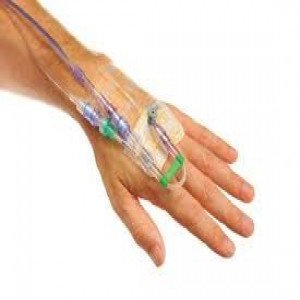 Welcome
Welcome
“May all be happy, may all be healed, may all be at peace and may no one ever suffer."
Beximco Pharmaceuticals Ltd.
Dexaqua DS 10%

Generic for Diseases
- Jaundice
- Appendicitis
- Cyclic vomiting syndrome
- Food poisoning
- Gastric Ulcer
- Duodenal Ulcer
- Peptic ulcer
- Cholecystitis
- Pancreatitis
- Atrophy of Stomach
- Low blood pressure (hypotension)
- Cardiogenic shock
- Cardiac Failure
- Heart failure
- Typhoid fever
- Plague
- Tetanus
- Tuberculosis
- Burns
Dextrose is a form of glucose (sugar). Dextrose 5% in water is injected into a vein through an IV to replace lost fluids and provide carbohydrates to the body. Dextrose 5% in water is used to treat low blood sugar (hypoglycemia), insulin shock, or dehydration (fluid loss). Dextrose 5% in water is also given for nutritional support to patients who are unable to eat because of illness, injury, or other medical condition.
Dextrose is administered in the treatment of carbohydrate and fluid depletions. It is mainly used to replace water deficiency and should be given alone when there is no significant loss of electrolytes. Water depletion (dehydration) tends to occur when these losses are not matched by a comparable intake, as for example may occur in coma or dysphagia or in the aged person who may not drink water in sufficient amount on their own initiative. It provides a readily metabolizable nutrient. One litre of 5% solution provides about 170 calories. Glucose solutions are also given in regimens with calcium bicarbonate, and insulin for the emergency management of hyperkalaemia. They are also given, after correction of hyperglycaemia, during treatment of diabetic ketoacidosis, when they must be accompanied by continuing insulin infusion. Dextrose also may act as a suitable vehicle for the slow intravenous infusion of numerous drugs.
5% dextrose solution: The dose of Dextrose infusion is variable. It is dependent on individual patient requirements. For 5% dextrose solution, the dose frequently ranges from 500 to 1000 ml. The maximum rate of infusion that will not cause glycosuria is 0.5 g/kg/hour. About 95% is retained when the rate is 0.8 g/kg/hr. the maximum rate of glucose utilization is about 800 mg per kg body weight per hour.
25% dextrose solution: The volume and rate of infusion of dextrose solution will depend upon the requirements of the individual patient and the judgment of the physician. The maximum rate at which dextrose can be infused without producing glycosuria is 0.5 g/kg/hr. The usual recommended flow rate for adult is 10-35 drops per minute infused intravenously. It should not be administered by SC or IM route. 25% dextrose solution should be infused through the largest available peripheral vein.
Administration
- Check infusion set and infusion solution prior to use.
- Pull moderately to tear off the protective cover of the Eurocap.
- Hold lightly the Eurocap but not the bottle body.
- Open the flow regulator fully and hold the giving set on the top white area, but not the memorane venting region.
- Insert the spike of the administration set to the Eurocap and fit the connector of the administration set firmly to the needle.
- Gradually allow the fluid to flow down to the needletip and close.
- Remove the protective cover of the needle.
- Locate the venpuncture site and clean the site with an antiseptic solution, and then insert the needle.
- Securely tape the puncture site.
- Securely tape the wings and tubing
- Start infusion while adjusting drip speed.
Do not take this medicine and tell your doctor if: You should not use this medication if you are allergic to dextrose. Before using dextrose 5% in water, tell your doctor if you have diabetes, breathing problems, an electrolyte imbalance, kidney or liver disease, a food or drug allergy, or if you receive regular blood transfusions.
- severe burning, pain, or swelling around the IV needle;
- warmth, redness, oozing, or bleeding where the IV was placed;
- fever, ongoing cough;
- high blood sugar, headache, trouble concentrating, memory problems, weakness, feeling unsteady, hallucinations, fainting, seizure, shallow breathing or breathing that stops;
- low potassium or anxiety, sweating, pale skin, severe shortness of breath, wheezing, pain, fast or uneven heart rate.
Serum glucose concentration should be carefully monitored. Concurrent use of insulin may be needed in case of diabetic patients. Dextrose solution should not be mixed with whole blood as haemolysis and clumping may occur. Infusion of fluid should be immediately discontinued if rigor arises for any reasons during the process. Do not use if the solution is cloudy, contains particles, or after expiry date.
Take special care with dextrose. Check with your doctor before taking this medicine if: You should not use this medication if you are allergic to dextrose.
To make sure you can safely use dextrose 5% in water, tell your doctor if you have any of these other conditions:
- diabetes;
- breathing problems;
- an electrolyte imbalance (such as low levels of potassium in your blood);
- kidney or liver disease;
- any allergy to foods or medicines; or
- if you receive regular blood transfusions.
Pregnancy & Lactation
FDA pregnancy category C. It is not known whether dextrose 5% in water will harm an unborn baby. Tell your doctor if you are pregnant or plan to become pregnant while using this medication. It is not known whether dextrose 5% in water passes into breast milk or if it could harm a nursing baby. Do not use this medication without telling your doctor if you are breast-feeding a baby.
Dexaqua DS 10% and more Available Brands
Amdopril 10mg + 20m...
Amdocal 10mg
Mobicam 20mg
Napa 500mg
Turboclav 500mg + 12...
Neodrop 67mg / ml
Xynofen SR 100mg
Avifanz 600mg
...
To be happy, beautiful, healthy, wealthy, hale and long-lived stay with DM3S.